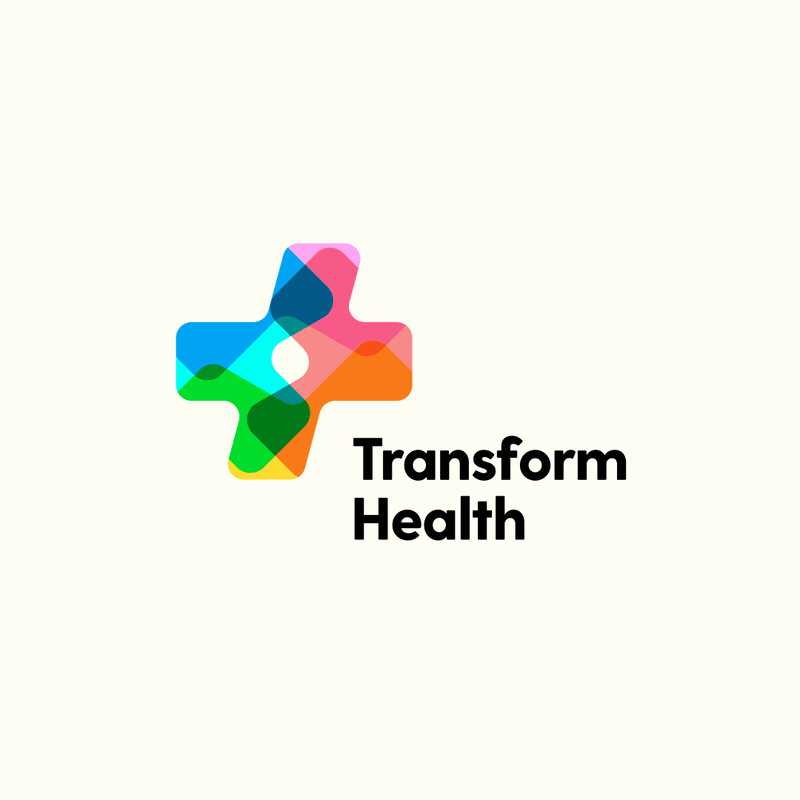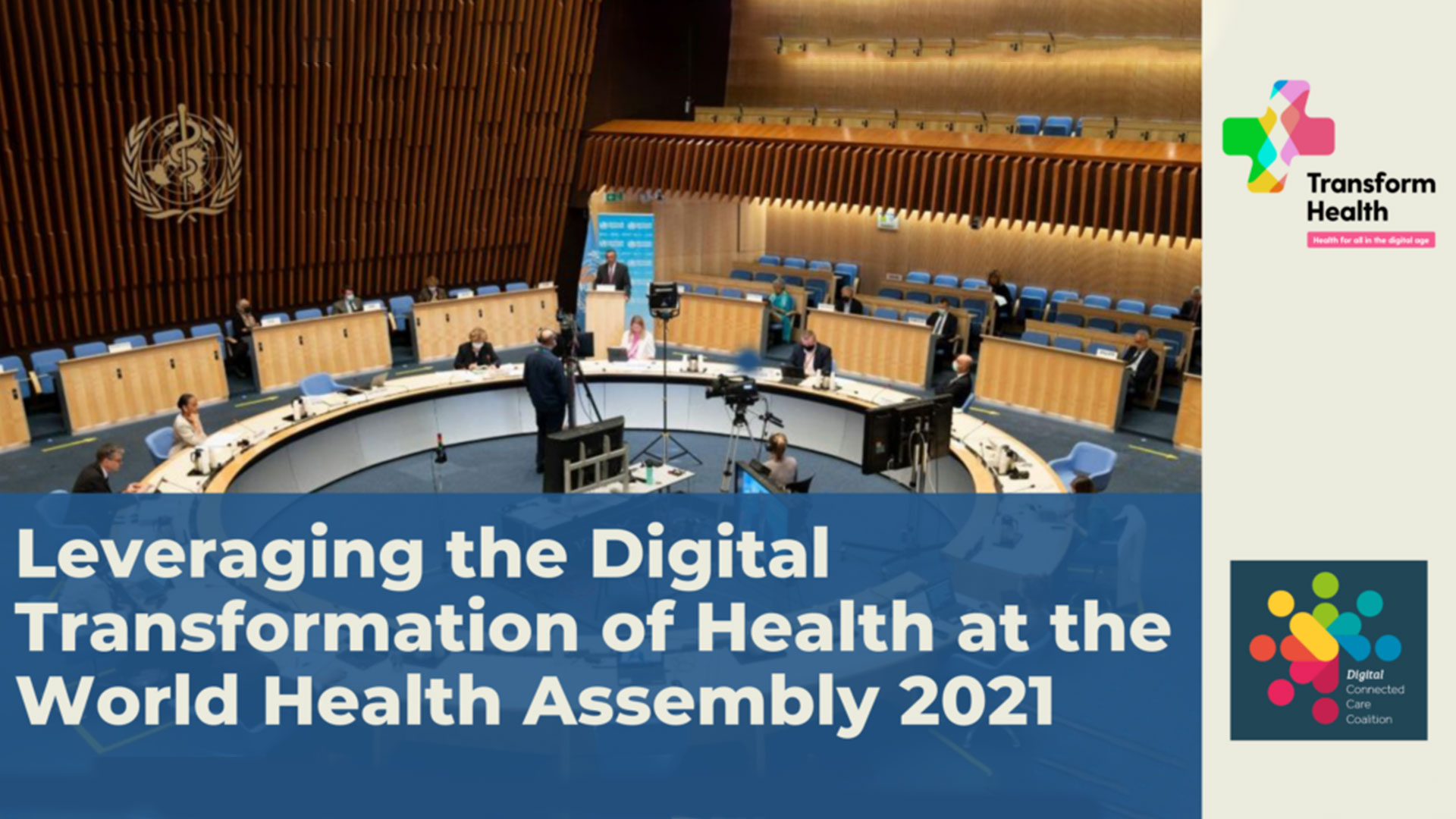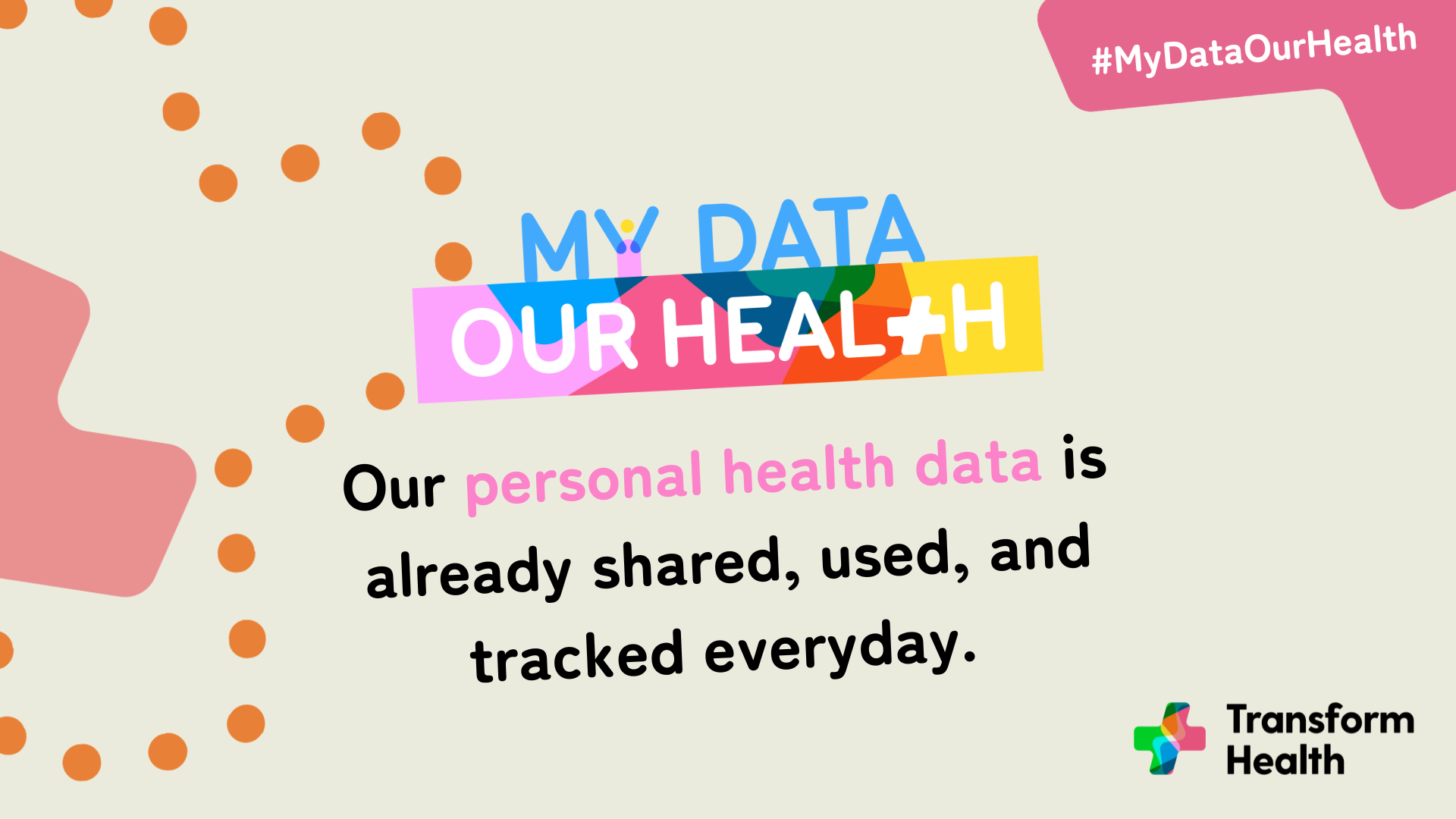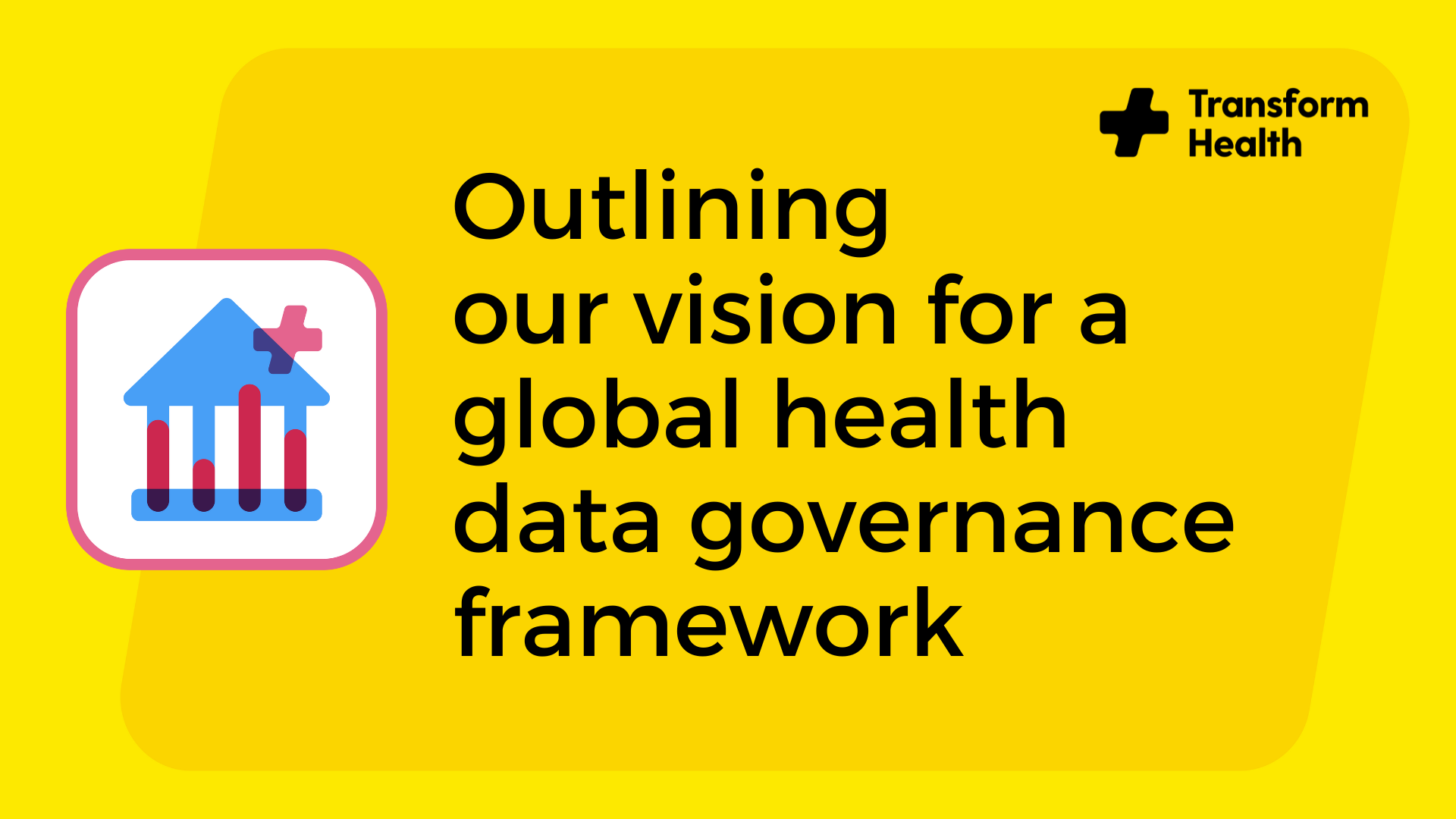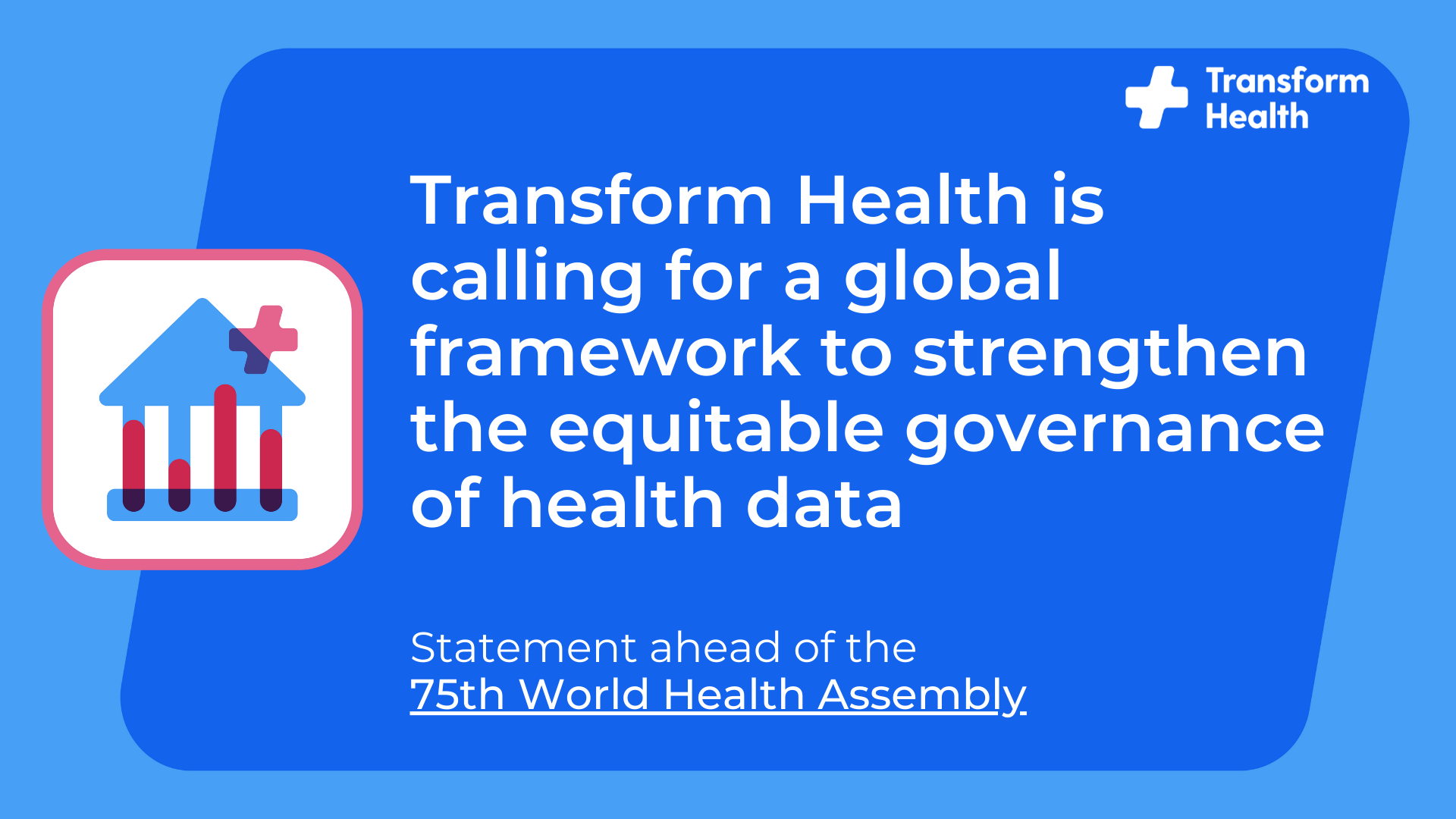Transform Health and the Digital Connected Care Coalition (DCCC) welcome the inclusion of digital technology under a number of agenda items in this year’s World Health Assembly (WHA). COVID19 pandemic demonstrated the need to build sustainable and resilient health systems, including patients and civil society involvement, and to leverage data analytics to predict the demand for healthcare services driven by the pandemic waves in a country, community and care setting unit.
Though it has been less a year since the adoption of the WHO’s Digital Health Strategy, health leaders at the World Health Assembly have the opportunity to provide both solutions and guidance on how governments in low and middle income settings are able to accelerate the adoption and/or further integration of digital technology and the effective use of data to expand primary health care and achieve universal health coverage (UHC) by 2030.
Members of the WHA also have the opportunity to call on wealthier donor nations to play a greater role in supporting the digital transformation of health systems in low and middle income countries, while also ensuring the use of data is both human-rights based and equitable, safeguarding data privacy, ownership and security.
A number of agenda items addressed digital technology and data:
- Agenda item 12 of the WHO Results Framework: Update notes that ”investing in data and health information systems is crucial for building back better and accelerating progress towards meeting the triple billion targets and the sustainable development goals”. The Assembly is invited to provide further guidance to the WHO on its role in strengthening health information systems.
- Agenda item 13.4 of the Global Strategy and Plan of Action on Public Health, Innovation and Intellectual Property, recognises that the need to ”promote the development of health products and medical devices needed by Member States, especially developing countries, that are: • developed in an ethical manner; • available in sufficient quantities; • effective, safe and of good quality; • affordable and accessible; • used in a rational way • includes recommendations of the review panel of the global strategy and plan of action recognises”. The recommended action to promote the transfer of technology includes a number of laudable actions to facilitate the transfer and local adaptation of technology.
- Agenda item 13.6 recognises the need to address substandard and falsified medical products through the expansion of training to ‘improve Member States’ understanding of detection technologies, methodologies and “track and trace” models.
- Agenda item 13.7 addresses the ‘standardization of medical devices nomenclature’ that will go some way in enabling countries to develop norms, standards and shared definitions in relation to digital technology.
This year’s WHA focuses heavily on the adoption of technological solutions to address health challenges. However, for nations around the world to develop health systems fit and able to leverage the advantages and full benefits of digitalisation, will require concerted political commitment and resources.
The accelerated adoption of digital technologies and data to achieve UHC needs to start with a recognition that health systems in many countries and regions have limited or sporadic access to digital infrastructure such as mobile phone connectivity and the internet. Many also lack the necessary technical and management capacity to collect, store, integrate, maintain, analyse and update digital technologies and data.
Digital technologies and data offer governments the opportunity to rethink the way health is delivered and to be far more inclusive in the way health systems plan and implement their programmes. Authorities need to engage people in and ensure peoples’ agency over their own health and wellbeing, particularly young people, women and marginalised populations traditionally excluded from health decision making processes.
Agenda item 17.3 of WHO’s work in health emergencies notes that the International Health Regulations make no mention of digitalisation. The report of the Review Committee on the Functioning of the International Health Regulations (IHR) during the COVID-19 Response recommends that in order to take full advantage of all the opportunities digital technology presents to enable implementation of the IHR, solutions must be found to address the digital divide and both data security and data privacy issues.
The report recommends that WHO should develop standards for digital interventions for pandemic preparedness and response such as vaccination certificates and contact tracing tools that respect, protect and uphold fundamental human rights. The report also recommends that WHO should develop a mechanism for States Parties to automatically share real-time emergency information, including genomic sequencing, that builds on relevant regional and global digital systems.
Agenda item 22.1 on the social determinants of health recognises the important implication of social determinants on the ability of countries to achieve UHC and that advances in technology can widen inequalities. However there is no mention in the agenda or the supporting documents of the critical role digital technologies and data can play in addressing social determinants of health, closing the health equity gap and in enabling people to manage their own health. Indeed self care is not mentioned in the report by the Director General despite its potential to transform healthcare, especially for vulnerable populations, and people who face barriers to healthcare access.
Digital technologies and data offer governments around the world an opportunity to think differently about how to address current and future health challenges. Digital and connected technology enables health providers to serve more patients in lower levels of care with improved outcomes. Digital technologies are enabling remote education, supervision and collaboration, as well as automation and task shifting, that are instrumental for capacity building. Telehealth prompts re-thinking a concept of a hospital to focus on a care delivery where it is best for a patient, augmented by virtual care and connected devices. Connectivity across levels of care grows the role of the primary care to re-distribute healthcare resources efficiently and to serve more patients close to their home. To fulfill this potential requires political leadership.
Rather than fall back on the approaches used in the past, governments can build back better after COVID-19, close the growing digital health equity gap and put countries on track for achieving UHC by adopting digital technology and putting people at the centre of health services.
Recommendations
- The unprecedented opportunities digitalisation presents to global health must be coupled with renewed and strengthened global governance frameworks for equitable and inclusive deployment and utilisation of digital technologies and health data.
- Digital transformation of health systems is the most effective way to ensure low and middle income countries are able to achieve UHC by 2030. For this to happen politicians at all levels need to demonstrate greater political will so that the right regulations, legislation, policies and resources are available to create an enabling environment for this change to happen.
- For locally relevant innovations to take off and scale, the need for new business models that bring together donors and impact investors, governments, NGOs and the private sector needs to be recognized. We believe that a committed ecosystem of strong collaborators with public and private partners is key to addressing the complex challenges in expanding access to care.
- All governments need to take a systems wide approach to digital transformation. This will require longer term and predictable resources and far greater alignment. Donors need to recommit to and implement The Principles of Donor Alignment for Digital Health.
